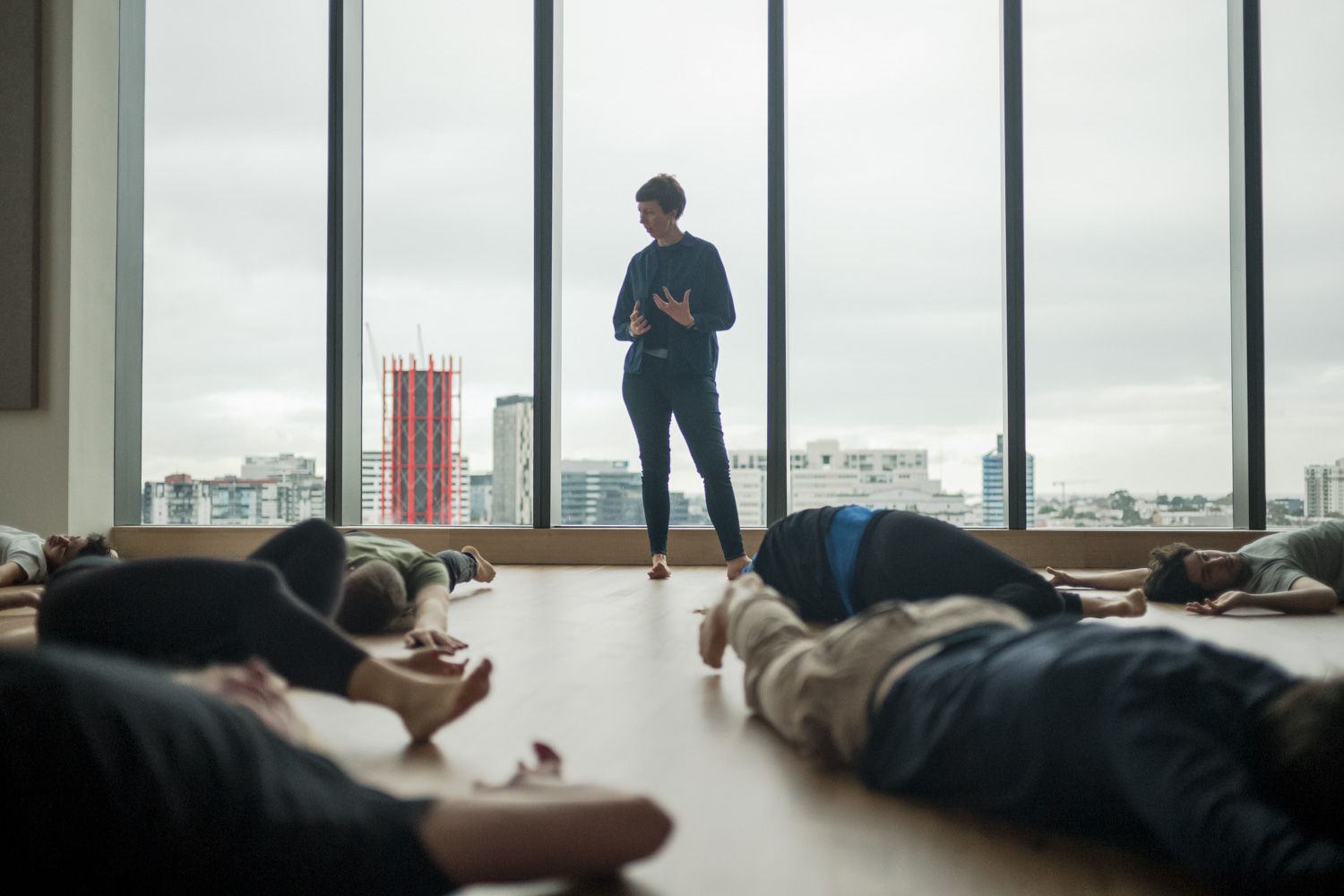Researching the arts and wellbeing: Challenges and opportunities

A recent Australia Council for the Arts workshop brought some of the country’s leading arts and mental health researchers together.
The wellbeing boost we receive from creative arts activity is well-known. But finding ways to tease out the complex and interacting active ingredients that constitute these benefits, appraise their impact on our mental health, and share them among all Australians, remains a challenge.
Leading arts and wellbeing researchers discussed these, and other, issues at the recent Arts and Mental Wellbeing Research Workshop hosted by the Australia Council for the Arts. A goal for this event was to better consolidate and coordinate the networks of researchers working in arts and mental health across Australia.
The University of Melbourne’s Faculty of Fine Arts and Music was represented by VCA Acting Director Jane Davidson; Frederic Kiernan, a Research Fellow with the Creativity and Wellbeing Hallmark Research Initiative; and Tiriki Onus, Head of the Wilin Centre for Indigenous Arts and Cultural Development and Deputy Dean Place.
It was part of preparations for an Australia Council-led Arts, Creativity and Mental Wellbeing Summit that will convene leading researchers, practitioners and policy makers in Canberra in early 2022.
Participants agreed that the bottom-up, free form nature of the creative arts contribute to individual and community wellbeing in a way that is quite distinct from other ‘top-down’ health interventions.
Claire Hooker from the University of Sydney articulated that through creative arts engagement we can find a route for expressing distress, making what often feels intangible “sayable, bringing it into an expressive space”.
However, for researchers working at the intersection of the arts and mental health, finding ways to measure and articulate these benefits in ways that will be considered ‘valid’ by policy makers and other stakeholders remains a key debate. In particular, it can be difficult to reconcile the subjective and experiential nature of the evidence gathered by artist-researchers with the Western medical model’s requirements for ‘robust’ evidence.
Speaking during the first session, Jane Davidson pointed out that, in an effort to understand the wellbeing benefits of participating in the arts, the nature of the artwork itself can sometimes be lost.
“Because our research methods are shaped by dominant discourses – particularly from the medical model of health – the art itself can be overrun in efforts to tease out its impacts,” she said.
There is a need for methodologies that are both robust and responsive to the ‘bottom-up’ nature of artistic practices. However, these need to work alongside existing empirical practices, and not replace them. Participants agreed that it is important to value different forms of knowledge, and ensure that research methods fit the question being asked, as they all reveal different pieces of the puzzle.
“We all have the same goal and we’re on the same team,” said Claire Hooker.
“We need to consider when and how and why different methodologies and forms of evidence are useful – both to us, and to the audiences we want to reach.”
Practical changes, like expanding the scope of funding models to incorporate more cross-disciplinary approaches, could help address this issue.
Another challenge facing the field is keeping access front and centre.
Frederic Kiernan highlighted that the arts can be inaccessible to some people, and that the ways in which certain practices are framed can discourage involvement.
“The ways people define what ‘good’ art is will regulate how they engage with it. These things change across time and place, and have wellbeing implications,” he said.
Finding ways to expand accessibility, so that more people can experience the wellbeing benefits offered by the creative arts, is crucial. Speaking to this, Indigenous midwife Marianne Wobcke from Griffith University pointed out that creativity is “embedded in our human biology and the culture that supports us,” but, in recent times, culture has been omitted from many Indigenous peoples’ upbringings.
“Our cultural and creative birthright was stolen from us,” said Marianne Wobcke.
“But we are finding our way back to it.”
Tiriki Onus highlighted that elevating Indigenous ways of knowing can benefit all Australians.
“We are finding ways to reclaim, revive and rematriate our stories, knowledge, technologies and histories back to the country of our grandmothers and grandfathers,” he said, noting the important wellbeing and mental health benefits that are flowing on from the Wilin Centre’s work.
“Fostering Indigenous authority is something that everyone can benefit from.”
As Australia’s major cities recover from the lockdowns of the past two years, the creative arts are helping make life joyful once more.
For the researchers working in this field, it is an exciting time to recalibrate how this contribution is understood and measured, how everyone can benefit from it and how we can learn from First Nations’ knowledge and cultural wisdom.
This Australia Council for the Arts workshop was hosted in partnership with the Creativity and Wellbeing Hallmark Research Initiative (CAWRI, University of Melbourne), National Institute for Experimental Arts (UNSW), CREATE Centre (University of Sydney) and Black Dog Institute.